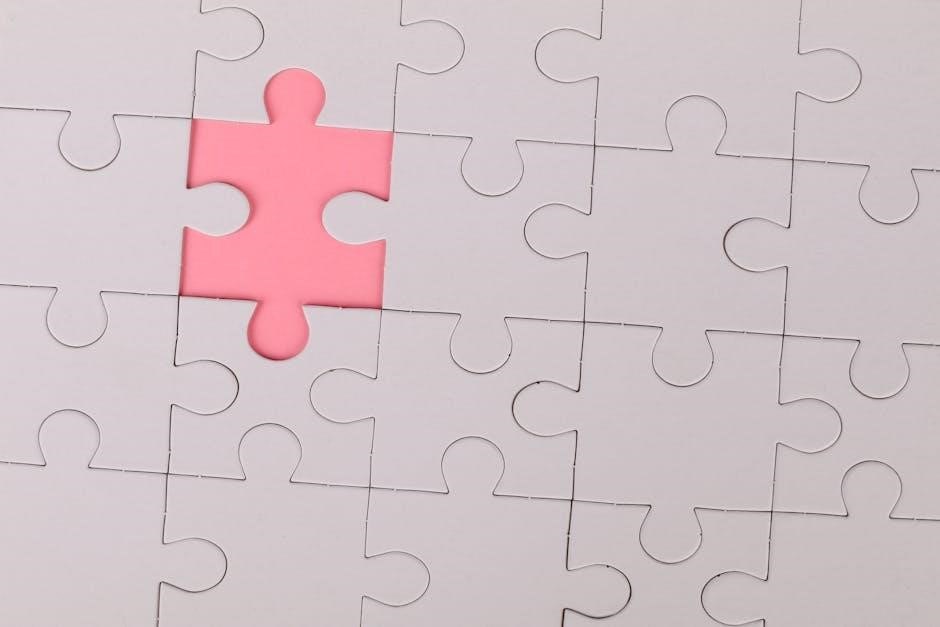
-
By:
- otis
- No comment
volume missing dimension worksheet pdf
Understanding Volume and Missing Dimensions
Volume represents the space occupied by a three-dimensional object. It is a crucial concept in geometry and has practical applications in various fields. Understanding volume is essential for further mathematical studies; This involves calculating the space inside shapes.
Volume calculation is a fundamental concept in geometry, determining the amount of space a three-dimensional object occupies. It’s essential in various real-world applications, from determining the capacity of containers to calculating the amount of material needed for construction. Understanding volume begins with familiarizing oneself with the formulas for basic shapes such as cubes, rectangular prisms, cylinders, and spheres.
For instance, the volume of a rectangular prism is found by multiplying its length, width, and height (V = lwh). Similarly, the volume of a cylinder is calculated by multiplying the area of its circular base by its height (V = πr²h). Mastering these formulas allows one to easily compute the volume when all dimensions are known.
However, volume calculations can also involve more complex shapes, sometimes requiring decomposition into simpler components. Regardless of the complexity, a solid foundation in basic volume formulas is crucial for success.
The Concept of Missing Dimensions
The concept of missing dimensions in volume calculations introduces an intriguing challenge. Instead of simply calculating the volume given all dimensions, we are tasked with finding one or more dimensions when the volume is known. This requires rearranging formulas and applying algebraic principles to solve for the unknown variable.
For example, if we know the volume, length, and width of a rectangular prism, we can find the height by rearranging the formula V = lwh to h = V / (lw). This process involves substituting the known values and solving for the unknown height. The ability to manipulate formulas is crucial for success.
Missing dimensions problems enhance problem-solving skills and deepen understanding of the relationship between volume and its constituent dimensions; These problems also help in real-world applications.

Worksheet Applications
Worksheets provide structured exercises to practice finding missing dimensions. These worksheets typically present a variety of problems involving different shapes. They offer a hands-on approach to reinforce understanding and build confidence in solving these types of problems involving volume.
Using Worksheets to Find Missing Dimensions
Worksheets are a valuable tool for students to practice finding missing dimensions when given the volume. They offer a structured and engaging way to apply formulas and problem-solving skills. Many worksheets focus on foundational shapes such as rectangular prisms and cylinders, providing ample practice in calculating volume. Worksheets help develop the key skill to manipulate the formula (Volume = lwh).
The problems presented in these worksheets allow students to reinforce their understanding of volume calculations and algebraic manipulation. By working through a variety of exercises, students gain confidence in their ability to solve for any dimension. The eActivity combines the written representation of the worksheet. These exercises are designed to reinforce the concepts.
Types of Shapes Featured in Worksheets
Worksheets commonly feature various geometric shapes to provide a comprehensive learning experience. Rectangular prisms are frequently included, allowing students to apply the formula Volume = lwh to find missing dimensions. Triangular prisms are another common shape, requiring students to use the formula Volume = (1/2) * base * height * length. Cylinders are also often featured, with exercises that involve using the formula Volume = πr²h to solve for missing values.
Some worksheets may include more complex shapes, such as L-blocks or composite figures, to challenge students further. These problems often require students to break down the complex shapes into simpler components and apply the appropriate formulas to find the volume and then solve for any missing dimension. This helps to give students a more challenging experience.

Formulas and Problem Solving
Understanding volume formulas is crucial for problem-solving. For a rectangular prism, the volume is calculated as V = lwh. These formulas are key to finding missing dimensions. For triangular prisms and cylinders, different formulas apply.
Volume Formulas for Prisms
Prisms are fundamental geometric shapes, and calculating their volume is a common task. The general formula for the volume of a prism is V = Bh, where B represents the area of the base and h is the height of the prism.
For a rectangular prism, the base is a rectangle, so the formula becomes V = lwh, where l is the length, w is the width, and h is the height. When dealing with triangular prisms, the base is a triangle, so the area of the base is (1/2) * b * h’, where b is the base of the triangle and h’ is the height of the triangle. Thus, the volume of a triangular prism is V = (1/2) * b * h’ * H, where H is the height of the prism.
Understanding these formulas is essential for solving problems involving missing dimensions. Knowing the volume and some dimensions allows us to find the unknowns.
Solving for Missing Dimensions in Rectangular Prisms
Finding missing dimensions in rectangular prisms involves using the volume formula V = lwh. If we know the volume and two of the dimensions (length, width, or height), we can solve for the remaining dimension.
For instance, if we know the volume V, the length l, and the width w, we can find the height h by rearranging the formula to h = V / (l * w). Similarly, if we know the volume, width, and height, we can find the length using l = V / (w * h), and so on.
These calculations often appear in worksheets and are essential for developing problem-solving skills. Practice with various examples helps to solidify the understanding of how to manipulate the formula and find missing dimensions efficiently. Remember to always substitute the known values and then isolate the variable representing the unknown dimension.
Solving for Missing Dimensions in Triangular Prisms
Solving for missing dimensions in triangular prisms involves using the volume formula V = 0.5 * b * h * l, where ‘b’ is the base of the triangular face, ‘h’ is the height of the triangular face, and ‘l’ is the length of the prism. Given the volume and two of these dimensions, we can find the third.
For instance, if we know the volume V, the base b, and the height h of the triangle, we can find the length l of the prism by rearranging the formula to l = V / (0.5 * b * h). Similarly, if we know the volume, length, and base, we can find the height h of the triangle using h = V / (0.5 * b * l).
Worksheets often provide various practice problems to enhance understanding. Manipulating the formula correctly is essential for accuracy. Remember to substitute the known values carefully before isolating the unknown dimension. This skill is crucial for geometry and practical applications.
Solving for Missing Dimensions in Cylinders
Finding missing dimensions in cylinders involves using the volume formula: V = πr²h, where V is the volume, r is the radius, and h is the height. If the volume and one of the dimensions (either radius or height) are known, we can solve for the other.
To find the height (h) when the volume (V) and radius (r) are given, rearrange the formula to h = V / (πr²). Conversely, to find the radius (r) when the volume (V) and height (h) are given, rearrange the formula to r = √(V / (πh)).
Practice problems in worksheets often require rearranging this formula. Ensuring correct substitution and algebraic manipulation is key to accuracy. Remember that the radius must be squared, and when solving for the radius, taking the square root is necessary. These skills are foundational for various geometrical and practical applications.

Real-World Applications
Understanding volume and missing dimensions is crucial in real-world scenarios. Calculating capacities of containers and designing structures often require these skills. Practical problems enhance comprehension and application of mathematical concepts.
Word Problems Involving Volume and Missing Dimensions
Word problems provide practical context for understanding volume and missing dimensions. These problems often involve real-world scenarios, such as determining the amount of liquid a container can hold or calculating the dimensions of a storage unit. By applying formulas and problem-solving strategies, students can find missing lengths, widths, or heights when the volume is known.
For instance, a problem might ask: “A rectangular prism has a volume of 224 cubic meters and a length of 10 meters and width of 4 meters. What is the height?” Such exercises reinforce the ability to manipulate formulas and apply them in practical situations.
These types of problems also help develop critical thinking and analytical skills, as students must first understand the problem, identify the relevant information, and then choose the appropriate formula to solve for the missing dimension. Successfully tackling these challenges builds confidence and prepares students for more advanced mathematical concepts.

Resources and Practice
To master volume calculations and finding missing dimensions, various resources are available. These include PDF worksheets for focused practice and online platforms. These offer interactive exercises and tools to enhance understanding and skill development.
Available PDF Worksheets for Practice
Numerous PDF worksheets are readily accessible to reinforce the concepts of volume and missing dimensions. These resources offer structured exercises designed to enhance problem-solving skills. The worksheets typically cover various geometric shapes, including rectangular prisms, triangular prisms, and cylinders. They provide opportunities to practice calculating volume when all dimensions are known and finding missing dimensions when the volume and some dimensions are given.
These worksheets often include a range of difficulty levels, catering to different learning paces and skill levels. Some worksheets focus on foundational shapes, providing ample practice in calculating volume using given dimensions or solving for a missing dimension if the volume is known. Answer keys are generally provided, allowing students to self-assess their progress and identify areas where further practice is needed. They are an invaluable tool for both classroom instruction and independent study, helping students solidify their understanding of volume and dimension relationships.
Online Resources for Volume and Missing Dimensions
Beyond PDF worksheets, a wealth of online resources exists to aid in mastering volume and missing dimensions. These interactive platforms offer engaging ways to learn and practice these concepts. Websites and educational apps provide virtual manipulatives, allowing students to visualize three-dimensional shapes and manipulate their dimensions to observe the effect on volume.
Many online resources include interactive quizzes and games that provide immediate feedback, helping students identify and correct their mistakes. Video tutorials offer step-by-step explanations of volume calculations and problem-solving strategies for finding missing dimensions. Some platforms even provide personalized learning paths, adapting to each student’s individual needs and progress. These online resources offer a dynamic and engaging way to learn about volume and missing dimensions, complementing traditional worksheets and textbooks. They are a valuable asset for both students and educators seeking to enhance their understanding of these essential geometric concepts.